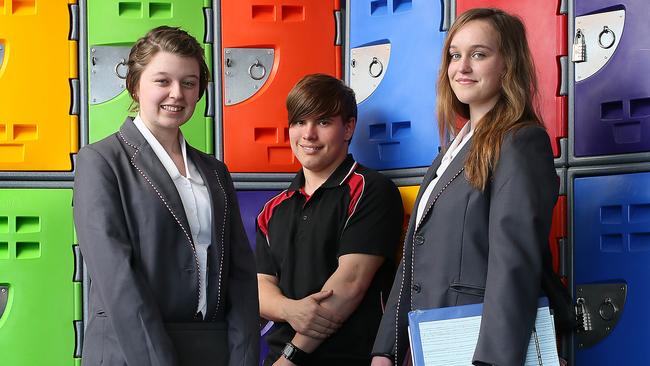
WE have long struggled to keep students in classrooms, but there is new hope that extending high schools to year 12 will help Tasmania arrest its alarming dropout rate. Will the scheme pass the test? Or will politics send us back to the drawing board?
A TEAM of construction workers has taken over the schoolyard at New Norfolk High School. The extensive landscaping is the final element of a big makeover designed to transform the way students and the community view and use the campus. But it is the transformation in the classroom that principal Adam Potito hopes will ultimately make the biggest improvement to the lives of young people in the Derwent Valley town.
This year, the school is offering year 11 for the first time. Next year, its small cohort of year 11 students will become the first to study year 12 locally. The extension of high schools across the state is at the heart of the Hodgman Government’s plan to improve Tasmania’s education outcomes.
Education Minister Jeremy Rockliff believes Tasmania’s unique school system, in which high school has traditionally finished at year 10, is a big reason the state continues to have Australia’s highest dropout rate. In 2014, just 50 per cent of state school students completed year 12, compared with 72 per cent nationally.
Rockliff’s aim is to bring Tasmania in line with other states by extending high schools to year 12 and, at the other end of the spectrum, allowing access to free kindergarten six months earlier. So far, he has persuaded 12 regional high schools – with the incentive of additional funding – to extend to year 12. Another 18 schools are due to extend next year.
However, the entire policy could unravel if Labor wins government in 2018, with the Opposition saying it may roll back years 11 and 12 from urban schools and possibly look at doing the same in some regional schools, such as New Norfolk. Deputy Opposition leader Michelle O’Byrne’s main objection to Rockliff’s policy is the threat she believes it poses to Tasmania’s colleges, although the minister insists colleges are here to stay.
It is more upheaval for Tasmania’s change-weary state school system, but education academics believe Rockliff is on the right track.
Potito worked at Claremont College for 15 years before taking over the principal’s office at New Norfolk at the start of last year. The announcement that the school would extend to year 12 came just a few months after his arrival and he has wholeheartedly embraced the opportunities – and challenges – that presents.
For past students who live at New Norfolk and in surrounding towns, the barrier of travel (almost an hour by bus to the nearest college, Claremont) has been an obstacle to year 12 attainment. But Potito hopes the change will also shift the biggest barrier of all: the common assumption in the valley and other parts of Tasmania that school ends at year 10.
“The really strong message we are sending is that school doesn’t finish at the end of year 10,” Potito says. “Most of our students, when they get to university, will be first-generation graduates. I think it’s important that we build an aspirational culture where students who have the capacity to go on to university are given the opportunity to do so.”
That the Government’s hopes are resting on her shoulders and those of her schoolmates is not lost on year 11 student Tash Winter. However, as university is something she has always aspired to, she is unperturbed by the weight of that expectation.
“My parents have always pushed uni, they want me to go far in life,” Winter, 17, says. “And I agree. Uni is probably the better way to go.”
Next year, she will focus on legal studies, with the aim of eventually becoming a criminal investigator. Before it was announced that New Norfolk would extend, Winter planned to complete her schooling at Hobart’s Elizabeth College, something the softly spoken teenager admits was a slightly daunting prospect.
“It would have been more difficult getting there and mixing with all the other people,” she says. “Here, it’s a known environment. The teachers really understand how you work and the classes are smaller. A few people thought the VET [vocational education training] courses should be part of it as well, but all the courses I was aiming to do are here.”
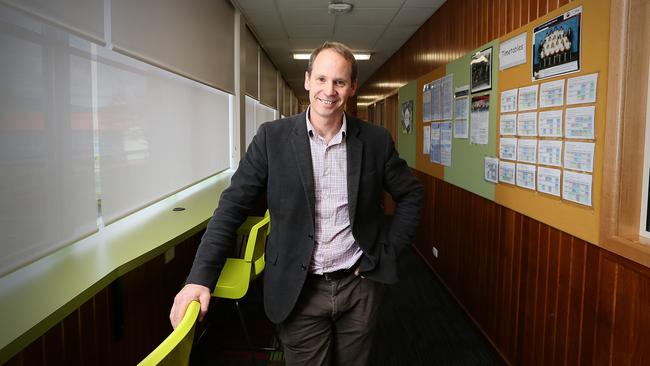
The really strong message we are sending is that school doesn’t finish at the end of year 10 – New Norfolk Principal Adam Potito
Winter’s classmate Britney Nelson is determined to become the first person in her family to go to university. “If this school hadn’t extended to year 12 I would have gone to Claremont College or got a job somewhere and dropped out,” Nelson, 16, says.
“For me, parent-wise and society-wise, there is more pressure to get a job rather than go through university. I think it’s because of the culture of the town. Education isn’t seen as as big a necessity as it probably should be.”
Bright and gregarious, Nelson admits she is a little envious of her mates who are attending Claremont and Elizabeth colleges. But she suspects she would not be half as committed to her school work had she gone off to college.
“I feel like it would be a lot more fun to go to one of the other schools but it’s a lot more focused on hard working here,” she says. “Me personally at college, I wouldn’t get as much done.”
O’Byrne, who is Labor’s education spokeswoman, is the first to admit her party’s role in the tumult within the education system over the past 15 years. But she says the man whose job she ultimately wants, Rockliff, is falling prey to the reform zeal that also tripped up former Labor education ministers David Bartlett and Paula Wriedt.
“There is not a minister for education – and I include Jeremy in this – who does not want to do the right thing,” O’Byrne tells TasWeekend in the Opposition wing of Parliament House in Hobart. “They’re presented with all this data and it’s terrifying. We’re failing a heap of kids. So the [minister] spends 12 months understanding that and deciding they need to fix things. Then they implement a new program, which they try to roll out in two years, and then you’ve got the fourth year of the term when the department knows you’re not going to be around, because ministers don’t stay in portfolios, and they wait you out. None of the ideas have been completely flawed. What is flawed is that we try to implement them really quickly as the only solution every single time. That’s all political colours, so we take some fall for that.”
In 2014, just 50 per cent of state school students completed year 12, compared with 72 per cent nationally.
Having picked up the education portfolio when Jim Bacon came to power in 1998, O’Byrne’s former cabinet colleague Wriedt tried to overhaul the state’s curriculum with the ill-fated and jargon-heavy Essential Learnings reforms. The backlash against the attempt to do away with traditional subjects was so great it nearly cost Wriedt her seat at the 2006 election.
When Bartlett became premier in 2008, his solution to the state’s low retention rates was to abolish the college system and introduce three new institutions: polytechnics for trade training, academies for university aspirants and a TAFE-like skills institute. The sweeping reform attempt sparked a widespread revolt by teachers, students and parents.
“If you’ve been in the school system for 13 years, you’ve gone through three or four ministers and three or four grand plans,” O’Byrne says. “None of them are without merit. Jeremy’s plan has merit. We just shouldn’t be rushing them through so quickly.”
Labor has vowed that, if it wins government in early 2018, it will put a stop to Rockliff’s reforms – except in remote communities, where O’Byrne agrees year 12 should be offered locally. “I can’t sign up to urban schools unless I’m prepared to say I don’t believe in colleges and I think colleges really do amazing things,” she says.
As for regional schools within commuting distance of existing colleges, O’Byrne is sceptical about the merit of extending them to year 12. “It’s places like Cressy, New Norfolk, Hellyer, Ulverstone that are going to require a fair bit of work,” she says. “It depends on where we are in another nearly two years’ time. It might be that, in two years’ time, students have voted with their feet and decided not to stay in their local school.”
She objects to the limited scope of the courses offered at schools such as New Norfolk, where there are 10 courses compared with the colleges’ 100-plus, particularly the lack of vocational courses. But Potito says the subjects, while limited in variety, were determined after consultation with students. Those who want broader options can go to college, or have a dual enrolment.
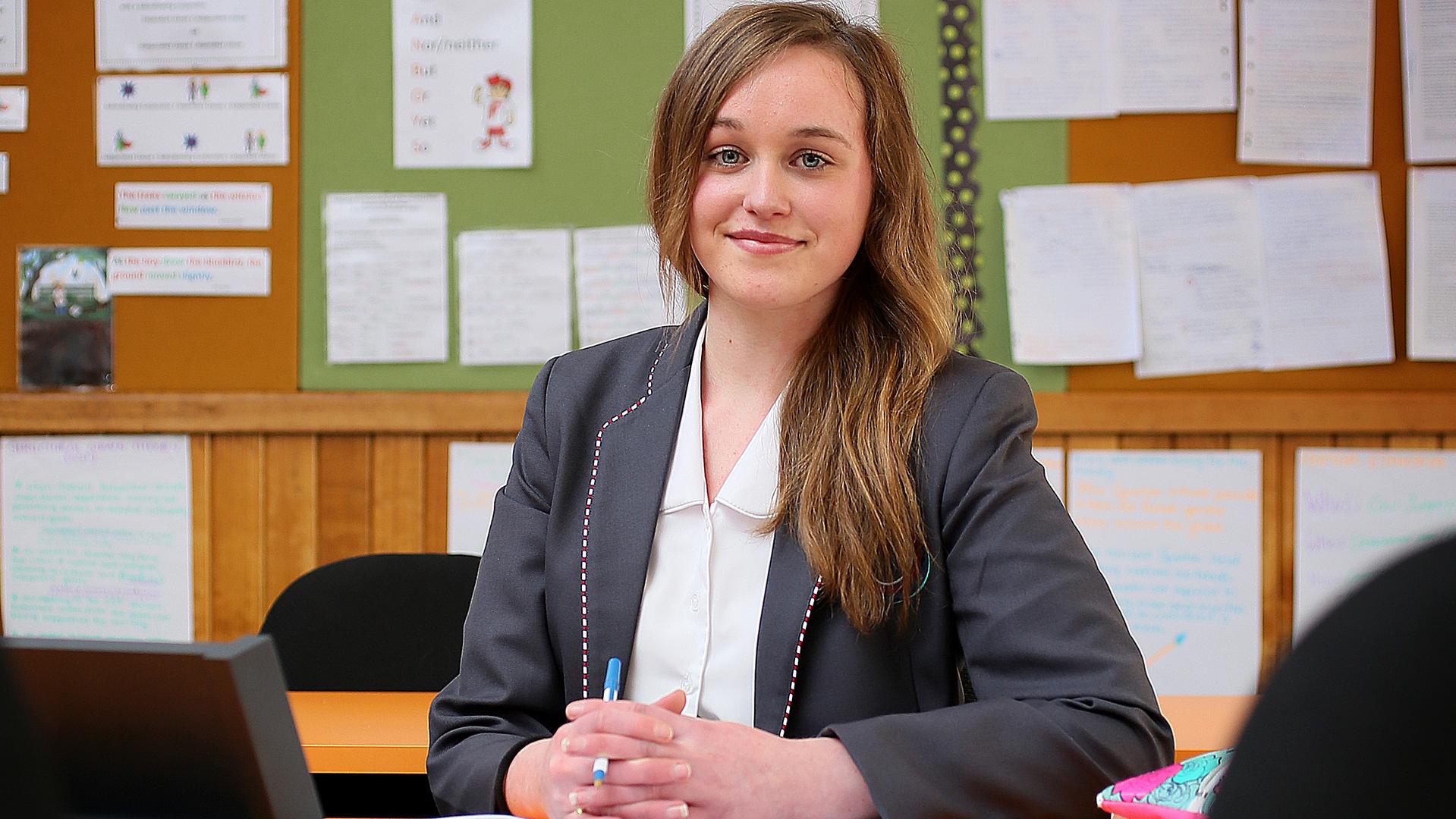
Tash Winter agrees that going to university is “probably the better way to go”.
O’Byrne’s fierce protection of Tasmania’s existing college system seems to epitomise the societal resistance to the change that academics and observers such as economist Saul Eslake believe is needed to truly lift the state’s educational – and socio-economic – outcomes. O’Byrne, a graduate of Queechy High School and the former Alanvale College in Launceston, says she would not be where she is today had she stayed at one school from years 7 to 12.
“When kids go to college they can completely recast themselves. I know I did,” she says. “At 15, if I had not been able to transition into college, I’d have ended up doing what most of my friends did. They went and worked in shops, they worked in supermarkets. That’s where I would have been.
“The social group that I had didn’t really value education. I went to a reasonably tough school. [But] my parents valued education. It was always assumed I would go to college and, when I did, I became a completely different student.”
O’Byrne is not alone in thinking there is more to lifting year 12 retention rates than simply bridging the gap between years 10 and 11. Some teachers insist the Tasmanian Certificate of Education (TCE) is harder to achieve than equivalent qualifications interstate. However, this argument has been dismissed by the key academics involved with Education Ambassadors Tasmania, a program launched by Governor Kate Warner last year with the aim of lifting retention rates.
Professors Eleanor Ramsay and Michael Rowan tested the theory by comparing Tasmania’s private school TCE completion rates with like private schools interstate. They found no difference. They have also created a comparison table of certificate requirements from different states, which they say shows the TCE is in fact the “least demanding”.
Eslake, who is also an education ambassador, likens the resistance to change in the education system to the opposition his father faced over the fluoridation of town water in the 1970s. As the head of the School Dental Service, his father was responsible for explaining the health benefits of adding fluoride to water supplies, attending fiery community meetings at which he was accused of poisoning children.
“Why is it that Tasmania has persisted with an education system that’s so different from the rest of the country in the face of overwhelming evidence it doesn’t do as good a job?” Eslake says.
He is disappointed Rockliff has not taken a tougher stance by merging the colleges into high schools, arguing the duplication of non-teaching costs is depriving kids.
“I have no doubt colleges do a good job of teaching the kids who go there, but not enough kids go there,” Eslake says. “That break in the structure that prevents more kids from going to college is one the rest of the country won’t put up with. We spend more per full-time equivalent student than any other part of the country besides the Northern Territory. We spend a higher proportion of our lower incomes on school education than any other part of the country. And yet we get worse results.”
Rather than structural reform, O’Byrne believes the key to improving retention rates is to “change community conversations” around education to ensure year 12 completion is seen as the norm. In her electorate she holds “kindergarten graduations”. The kids get a congratulatory certificate, which tells them the year in which they will graduate from year 12.
Labor would also reinstate career pathway planners (sacked by the Government in 2014) in schools and make students automatically enrol in year 12 at the start of high school.
A week after my interview with O’Byrne, I’m back in the rabbit warren of Parliament House – this time in Rockliff’s office. Rather than “simplistic”, as O’Byrne calls it, Rockliff says his high-school extension policy is “simple”. “This is not rocket science,” he says. “It’s all about the kids, so let’s provide flexible, innovative models to ensure they have the opportunity to complete year 12, whether it’s in their school or they go to a college, or a combination of both.”
His theory is that extending all high schools to year 12 – and changing the community mindset – will boost enrolment numbers across the board, making both schools and colleges sustainable.
“We’ve been very open to say colleges are here to stay,” Rockliff says. “They will always have a role to play. But let’s not bury our heads in the sand and think how wonderful things were when we were at school 20, 25 years ago. The world has changed and our education system needs to change and adapt to our changing environment.”
Rockliff’s pledge to retain colleges may be viewed doubtfully by O’Byrne, but it has won him the crucial support of the Australian Education Union.
The union’s Tasmanian president Helen Richardson says Rockliff “has promised that year 11 and 12 extensions will not be to the detriment of the college sector and, in fact, the Government’s focus more recently on partnerships and pathways with schools has put colleges at the centre”.
Richardson says, however, that extra funding for years 11 and 12 should be directed “where it can make the most difference”, which in her mind is in regional and remote communities.
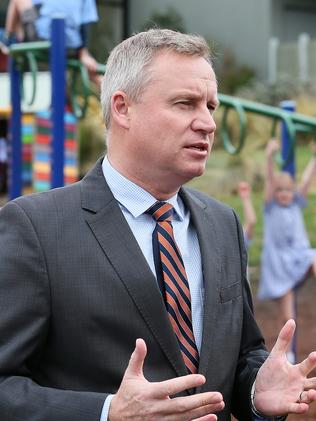
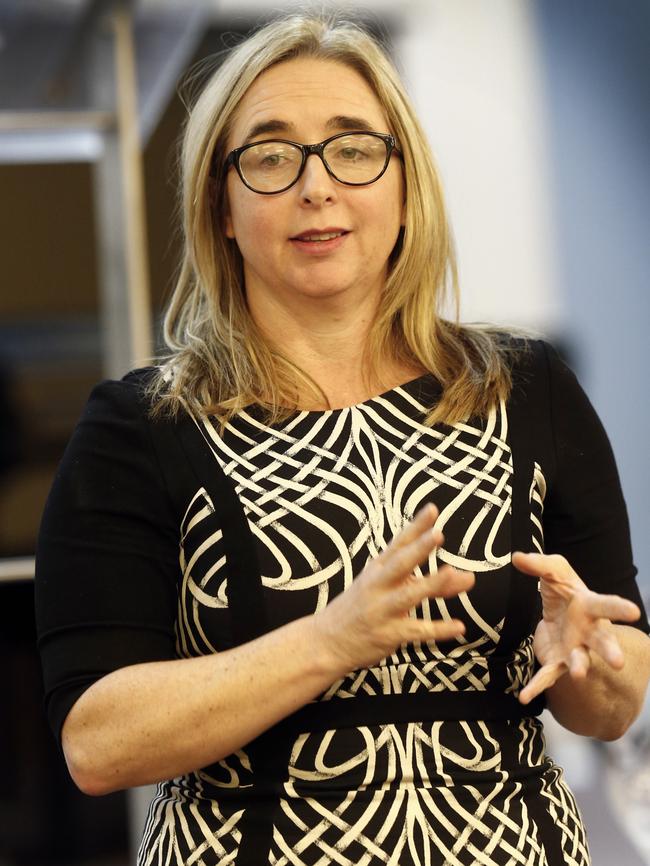
Rosny College principal Deb Day is a Queenslander who moved to Tasmania 18 months ago. Although Tasmania is the only state with a separate year 11 and 12 public college system, Day believes the unconventional structure works well in the island state.
“Having seen both systems and coming from Queensland where there is no segregated college system, I see distinct advantages in the colleges,” Day says.
“Tasmania is unique. The big thing is the size of the place. The population is small compared with the mainland states.”
Day sees no threat in the extension of urban high schools to year 12, which she believes will open up myriad opportunities for students and staff. From next year, Rosny College will form the teggana Collective, taking its name from an Aboriginal word for heart, with the Rokeby, Rose Bay and Clarence high schools, Campania and Triabunna district schools, and Sorell School.
The six schools will all offer years 11 and 12, catering their offerings to the interests of students and – in the case of Triabunna in particular – the needs of local businesses. Each will maintain an individual identity but students will be free to enrol at any of the campuses.
Day was this year forced to respond to community unease over the changes, reassuring families via newsletter that students would have a choice between staying on at school and going to college.
She dismisses concerns about a lack of specialist staff to cater for so many year 11 and 12 options, saying college teachers will work as mentors and leaders to help upskill existing high-school teachers.
Rokeby High principal Gill Berriman says she has noticed a shift in the student mindset as a result of the incoming changes. She says there has been a dramatic increase in the number of students expressing a desire to complete year 12. “It’s not ‘if’, it’s ‘where’.”
Those sentiments are echoed at New Norfolk High by English teacher Belinda Burley. “In my time here I’ve seen the mentality of students change,” she says. “A lot of them used to just make plans for year 10 and now that’s really not something that is accepted.”
‘I would like to see a year 12 completion rate above the national average and most certainly a retention rate from year 10 to 11 of above 90 per cent’ – Education Minister Jeremy Rockliff
For Burley, there is career satisfaction in the opportunity to teach advanced English and introductory psychology to her year 11 students, whose talents and foibles she knows well, having taught them for years. “It’s rewarding because we get to learn something new and something different. We get to invest in some new curriculums and learn some new content knowledge,” she says.
In Tasmania’s North-East, 18-year-old Jeremiah Lethbridge is among the first cohort of year 12 students at Scottsdale High School, which began its extension program last year. He missed a large chunk of school last year because of chronic fatigue syndrome resulting from rheumatic fever, with which he was diagnosed in year 9.
“There were days when he just couldn’t get out of bed because he was too unwell, and travelling every day would have really just wiped him out,” his mum Sarah says. “On those grounds alone, it’s been amazing that he’s been able to stay on at Scottsdale.”
Although he would likely have enjoyed Launceston College had he been well, Lethbridge says he is confident he will leave Scottsdale High well-prepared for uni. Not having to spend a couple of hours on the bus each day also allows him to work part-time at his mum’s wholefoods store at Scottsdale. “I’ll try to get into uni and study something about graphic design and hopefully become an architect,” he says.
His schoolmate, year 11 student Steven Atkins, 17, lives at the beautiful coastal town of Bridport, 20 minutes from Scottsdale and more than an hour from Launceston. Staying on at Scottsdale High was a no-brainer, he says. “Bridport is just an amazing place in general and studying at Scottsdale saves me two hours-plus travel every day,” the aspiring chef says.
Next year, he wants to get his kitchen operation certificate at a commercial training kitchen, which will open at the school in February. “I wouldn’t mind going to uni and doing a hospitality management course because my plan is to own my own restaurant and be the head chef,” Atkins says.
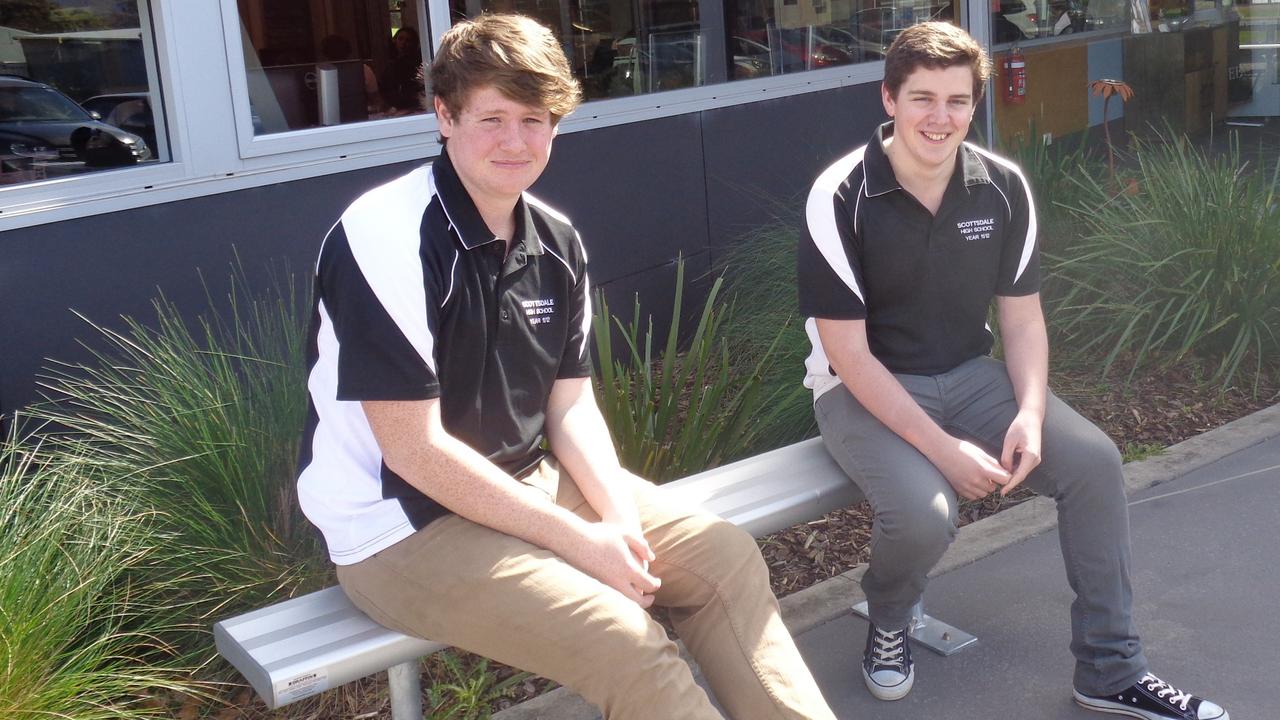
Scottsdale High School students Jeremiah Lethbridge and Steven Atkins.
Some parents believe the school and community could do more to “fully integrate” years 11 and 12, such as allowing the senior students – of whom there are 38 – to compete in swimming and sport competitions. “There’s still that mentality that you finish high school at year 10,” one parent says.
Scottsdale principal Jeanna Bolton-Dean insists the year 11 and 12s are integrated, wearing a uniform, attending sport events as umpires and having access to support services. “As the number of extension schools increases, the idea of interschool sports for year 11 and 12 students in rural areas could be explored,” she says.
At many high schools, including New Norfolk and Scottsdale, the language has changed around the traditional year 10 “leavers dinner”, which has been replaced with a year 10 formal or dinner. But given there is a much larger cohort of year 10s than 12s at extension schools, the bigger celebration remains at the end of year 10.
Bolton-Dean says Scottsdale’s year 10 dinner is held at the school and is accompanied by a “charter signing assembly”, which she says reflects the students’ commitment to further learning.
“Grade 10 students follow a number of different pathways, depending upon their learning needs, interests and future career planning,” she says. “Some students stay at Scottsdale for years 11 and 12, some go into Launceston [colleges] and others have had apprenticeships and traineeships to start.”
As Winter poses with her classmates Jacob George and Ellie Hayton for TasWeekend’s cover photograph, they represent one-fifth of New Norfolk’s entire year 11 cohort. Of the approximately 70 students who were in year 10 last year, just 15 have stayed on for year 11. One student who had transitioned across from the nearby Glenora District School dropped out after securing a job.
Potito says many of the other year 10s from last year would have gone on to Claremont or Elizabeth colleges. From there, he does not know if they stay on or drop out. “Once they’ve enrolled at college their dropout rate is with colleges to let you know,” Potito says. Bolton-Dean says the same lack of data is true for students who transition from Scottsdale High to Launceston College.
However, Education Department figures show that of the 85 year 10 students who attended New Norfolk High School in 2013, 56 per cent went on to finish year 12 (slightly above the state-wide average). At Scottsdale, 60 per cent of year 10 students from 2013, of which there were 70, finished year 12.
It is more upheaval for Tasmania’s change-weary state school system, but education academics believe Rockliff is on the right track.
When asked how he will quantify the success of his reforms, Rockliff says that, as his policy “evolves and rolls out”, he wants to see state-wide completion rates rise more than 20 percentage points.
“I would like to see a year 12 completion rate above the national average and most certainly a retention rate from year 10 to 11 of above 90 per cent,” the minister says.
Potito is confident numbers at New Norfolk High will grow as word gets out and the school’s partnership with Glenora is strengthened. “It will take time to build the full capacity of what we do, including our involvement with Glenora,” he says. Although the subject offering is small, there are many advantages, he adds.
Jacob George, a sports-mad 17-year-old with a black belt in karate, says the extra one-on-one time he gets with his teachers has been a huge help. “I used to struggle in maths and sometimes English. But now, with fewer people, I’ve been getting top grades,” he says. He has a dual enrolment, at New Norfolk and Claremont College, where he studies sports science.
Ellie Hayton, 17, is unsure what she wants to do at university, but is determined to get there. Although she used to volunteer at the local nursing home, she says a medical or nursing pathway is not for her. “I loved it, I met some amazing people, but it turned me away from it,” she says. “I don’t know if I could deal with all the grief – I get too attached.” Lately, she has been trying to convince her family that a teaching degree would not be, as her mum suggests, a waste of her potential. “Regardless of whether I know what I’m going to do, I’d like to go to uni,” she says.
As he fights for a greater share of federal education funding, Rockliff is unfazed by the small numbers at New Norfolk in the first year. He points out Huonville High’s year 11 and 12 cohort has grown to 95, compared with 36 at the beginning of the extension.
“We should be providing our kids with opportunity,” Rockliff says. “Every school that does extend should be given the opportunity to succeed and, in my view, [with] every school that does extend, the community will reap the benefits, and every child who goes through will reap the benefits.”
He says the true test of his policy’s success would be to check in with students in 10 years. Who knows, he says, what opportunities will be open to them.
“More education opens people’s minds to possibilities and more options,” he says. “Let’s let the students be the judge.”
For more great lifestyle reads, grab a copy of TasWeekend in your Saturday Mercury.

Add your comment to this story
To join the conversation, please log in. Don't have an account? Register
Join the conversation, you are commenting as Logout